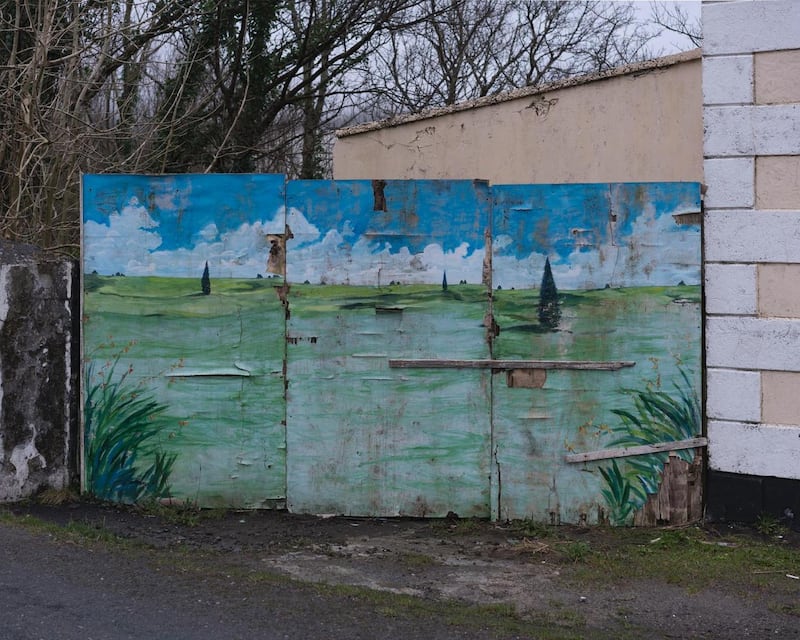PhotoIreland is most commonly associated with the annual photographic festival it runs. The festival is really a season of photographic exhibitions and events. This year’s included Laia Abril’s extraordinary On Abortion, plus several other shows and a three-week working residency at Rathfarnham Castle involving 13 participants and several artist facilitators.
Since its foundation in 2010, PhotoIreland has consistently aimed for ambitious projects carried out on minimal means, including publishing, via TLP Editions, and a residency programme. It particularly aims to nurture emerging photographers. The annual photo-book and magazine fair, begun in 2011, led on to PhotoIreland’s current occupancy of The Library Project in Temple Bar, which is simultaneously a gallery, an art and photography bookshop and a photo-book library (managed by Julia Gelezova).

0 of 6
Now, PhotoIreland is momentarily absent from The Library Project as it takes on a new challenge: participation in two separate EU-funded contemporary photography platforms, titled Parallel and Futures, involving a presence at two major events, the Organ Vida photography festival in Zagreb, September 9th-14th, and Unseen Amsterdam, September 21st-23rd. All going well, trans-European participation will be effected in a compact but capacious reconfigured former An Post van. The van will be a mobile reading room and bookshop, promoting Irish publications, stocked with a selection of photo-books, a back-up to the exhibition of work by Irish artists and, as PhotoIreland artistic director Ángel Luis González Fernández hopes, an invaluable aid to the process of networking and communication that broadens awareness of Irish photography.
Noteworthy
The two Irish artist/photographers involved in Parallel are Mark McGuinness and Róisín White. As it happens, White is also included among the five in Futures, together with Barry W Hughes, Ciarán Óg Arnold, Miriam O’Connor and Jamin Keogh (all of whom have made noteworthy bodies of work). As platforms, both Futures and Parallel represent attempts to synergise the plethora of individual photo organisations, long and more recently established, throughout Europe, encouraging communication, promotion and exchange. It’s tempting to say that, as befits an EU invention, Parallel boasts a structure of labyrinthine complexity, but the sheer number of variables involved necessitates some complexity. The first layer of the labyrinth is the network of photographic organisations, enormously varied in their nature to begin with. Then things get more involved. The organisations draw in emerging artists, but also emerging curators (reflecting the current wisdom that artists, however many, couldn’t change a lightbulb without curatorial guidance). Artists and curators get together, the idea being to produce new work for exhibition.
So Parallel initiates a cycle: each year a new crop of emergent artists and curators pair off, putting in train shows that will materialise the following year. They are further guided by the various involved organisations. This year González will begin work with a selected curator in preparation for an exhibition in Dublin next year, for example, while work by White and McGuinness will be on view, including the latter's project, Byzantium, a meditative series that addresses the human need to find purpose and meaning. It is quite complicated, and, as Gonzáles says, it can be laborious from the inside, but transnational mobility is essential for the development of Irish photography, and this is one of several available ways of achieving it.
“I believe there is a lot of work being made by young Irish photographers that is worth showing in an international context,” he says. “The same applies to the visual arts in a more general way, but delivering international exposure for either is notoriously difficult, expensive and tricky.”
Lag slightly
Furthermore, Gonzáles implies, attitudes to photography in Ireland lag slightly behind Europe. Here, the “art-craft” idea of a pictorial product still tends to dominate the field. He argues for a much wider view of photography “as a process of enquiry, or part of a process of enquiry”, with multiple lines of possibility, something that is happening all over. It was strikingly evident, say, in the work of Laia Abril, which encompasses photographs per se, sourced documentary images, text, reportage, installation and more. Here, White is one artist who tends to work in a comparable way, incorporating her own drawings, found images, collage and other elements in her works.

After Zagreb, Amsterdam. Unseen Amsterdam is one of the pre-eminent photo events in Europe (together with Paris Photo, the world's largest, and the exceptionally popular Les Rencontres d'Arles). As the title suggests, Unseen's focus is on fresh talent. Work by the five Irish photographers will be on view under the Futures umbrella. Talks, "coaching sessions" and other events, plus the mobile reading room with book-signing sessions (including that for Shane Lynam's Fifty High Seasons), will augment the exhibitions.
It doesn’t end there. Three of the participating organisations are selected as “residency countries”. That includes PhotoIreland, and Ireland (the others are based in France and Poland). Two artists will be assigned to each. In the case of Ireland, German-based Jewgeni Roppel and Luis Alberto Rodriguez will spend a week in Dublin, followed by six weeks during which they will be based at Cow House Studios in Co Wexford. They will work to a theme: cultural heritage in relation to the local environment. It’s entirely possible that one of the Irish artists may be offered one of the other available residencies. PhotoIreland, meanwhile, should be back at The Library Project later in the autumn.



















